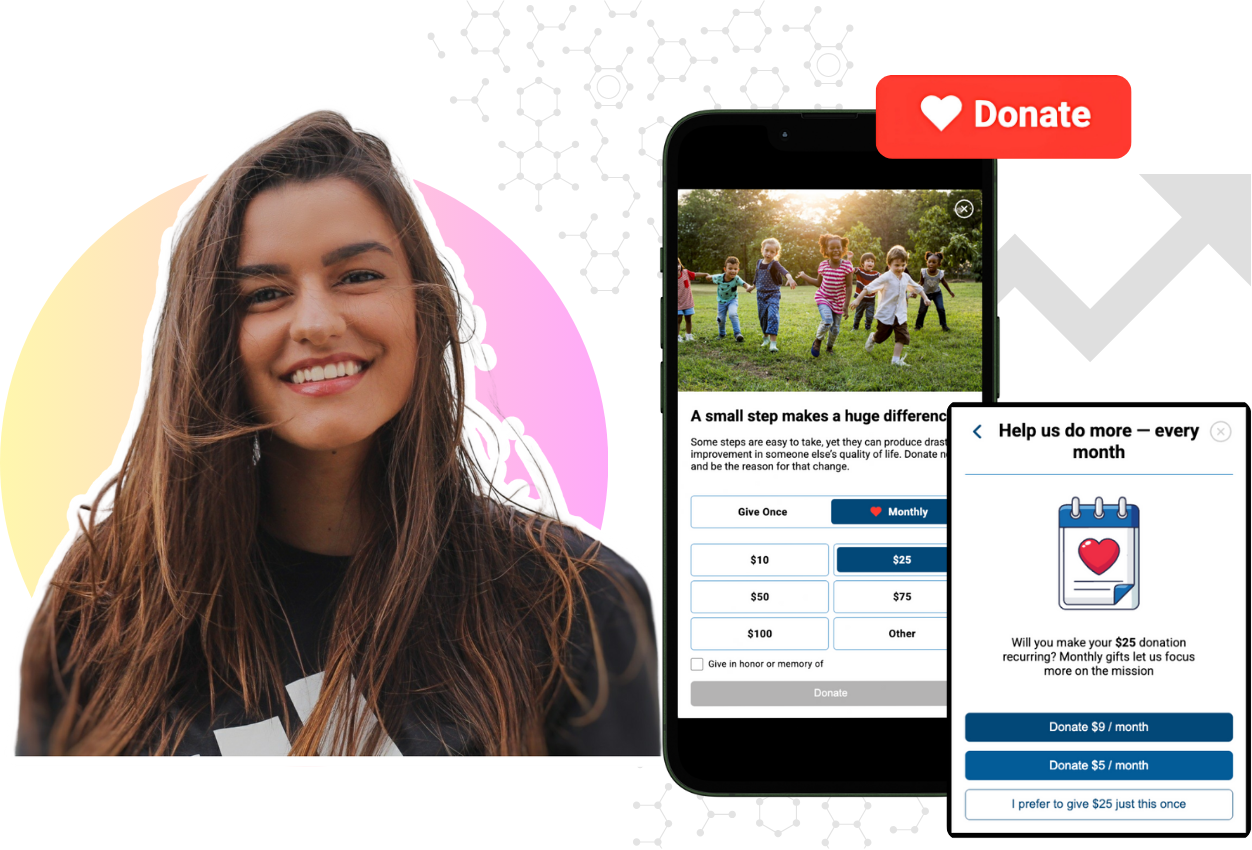Why Is There a Lack of Innovation in the Nonprofit World?
If there’s a key marker of where nonprofits stand today in terms of making progress in their fundraising, it’s the figure of 2%. That’s the...

Mobile-First Pop-Up Donation Form
Launch mobile-first pop-up forms in minutes, use built-in tools to capture more donations, and optimize the giving experience—no dev team required.
New to online donation pages for your nonprofit? Start here.
Donation page A/B testing - no science degree needed.
Keep your donation page loading fast - and drive higher conversions.

The 4 Types of Online Donation Experiences
89% of donors leave without giving. Learn how to use the right donation form to close the gap and boost conversions.

While it may not be “news,” recent data on giving in America paints a troubling and persistent trend. Reports show that fewer than half of American households give to charity. That number is down from two-thirds in the early 2000s, according to the Journal of Philanthropy. Based on this data, it appears that 20 million households have seemingly “disappeared.”
There are several factors that can explain at least some of this decline. From the steady proliferation of charitable organizations (there are some 1.5 million in the U.S. today) to busier-than-ever lifestyles, to the social, cultural, and political distractions that crisscross our lives daily, it’s plain to see why NPOs are having a hard time competing for the attention of donors.
But I believe the key to understanding the problem of dwindling participation lies with the very approach nonprofits bring to fundraising. To bring about actual change and measurably grow the donor universe, NPOs need to transition from being focused on their own systems and processes to focusing on what motivates donors intrinsically, what they care about, and to cultivate relationships based on that.
This means shifting from being operational-centric to being donor-centric. NPOs typically have invested significant time, money, and other resources in the systems and processes they’ve developed to carry out their fundraising. From that point, it’s deceptively easy to drift into an “inside-out” perspective when it comes to donor relations. This is the case where an NPO’s entire frame of reference is informed by looking outward at donors through the lens of their own internal infrastructure and systems.
It’s a common bias that can crop up in any enterprise, nonprofit and for-profit alike. But if they wish to truly become a sustainable organization with lasting relationships among their donors, NPOs need to develop an “outside-in” perspective. In other words, they need to begin seeing their organization from the donor’s side. This is what’s meant by a donor-centric approach.
That fundamental change in context will bring with it an entirely new focus, one that facilitates anticipating and acting upon the needs, priorities, and habits of donors. Adopting a donor-centric approach is how long-term relationship building takes place.
After all, donors are essentially like everyone else – they’re people who are endeavoring to lead full, purposeful lives. And the causes they’re committed to are important components of a purposeful life. Tapping into donors at the commitment level is what’s required as part of a larger course correction from fundraising to what I call “donor raising.”
Along the way, there are some essential things nonprofits need to become adept at. For example, reaching donors “where they live.” This means investing the time to understand what sets one donor apart from another, acknowledging that donors are also consumers, figuring out what’s relevant to them, and identifying what they do and don’t like. This is where the power of personalized communications comes in.
A donor-centric approach also means clearly demonstrating, on a recurring basis, the impact donors’ gifts are having in the real world. It’s a primary way of reinforcing the relevance and importance of a cause in the eyes of a donor. It’s a vision of donors as stakeholders. With this framework in place, nonprofits can devote their energy and resources to nurturing the advocate in every donor. Nurture the advocate, consistently, and the advocate will show up, again and again.
At first pass, everything I’ve described above can look daunting and far-off. But that needn’t be the case. It all starts by creating a donor-centric approach, as opposed to trying to fit donors into your organization’s internal processes. Armed with a commitment to a donor-centric approach, nonprofits can build lasting organizations driven by deeply felt, sustained donor relationships.
iDonate’s Digital Fundraising Platform (DFP) allows for easy experimentation and innovation to strengthen ties with recurring donors, accelerate conversions, and achieve sustainability. Visit iDonate to learn more, and contact us at the link below to get started.

If there’s a key marker of where nonprofits stand today in terms of making progress in their fundraising, it’s the figure of 2%. That’s the...

The busier and more crowded our lives become, the greater the gap between what remains important to us and all the other things seeking our...

Technology and people are inseparable today. That seems obvious, of course. We’re all so accustomed to the myriad of ways technology influences our...